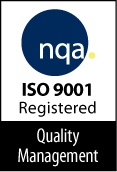In the seventh and final part of our series entitled, Important Considerations when Shopping for EDC, we will discuss the upfront cost structure of an EDC system and what the costs vs. benefits are.
Despite EDC’s established history and a perception that “Everyone is using an EDC System”, several Pharma and Medical Device Sponsors continue to use a paper based system. Many of these companies cite the upfront cost of transitioning to EDC as the reason. For example, the costs of queries for a single study back in 2008 would usually average around $300,000 for a site utilizing a paper type system verses around $30,000 for a site using an EDC system. Overall, an EDC system may entail more upfront costs but the system benefits will far outweigh the initial cost to the organization. Long term savings will be gained in both speed and superior data quality.
Here are some ways that an EDC system can cut costs overall while increasing data quality for an organization:
- Fewer queries and faster resolution time
- Reduced layers of human manual errors
- Cost savings linked to shortening study duration and a more rapid data lock
- Eliminates Double Data Entry Per Page
- Eliminates the cost of printing and mailing each page
- Reduces the cost of monitoring visits. A combination of remote and onsite visits can be utilized vs 100% onsite
- Reduces the cost of storing and archiving paper
- Addition of immediate edit and logic checks
- Addition of an electronic audit trail
- Addition of instant management and statistical reports
- Ability to integrate with other systems
Overall, EDC can save the sponsor and sites both time and money while increasing data quality. Ensuring a vendor has the right technical and system experience is key when looking to transition to EDC from paper.
Total Cost of Ownership: The best solution in the world is of no value if it’s not affordable. To assess affordability, you must understand the total cost of the vendor’s solution. Measuring Total Cost of Ownership (TCO) is easy. You simply add up the three-year labor costs, licensing fees (including third-party), support fees and hardware costs associated with a vendor’s solution. Many old-school analytics vendors require a significant upfront investment with no guarantee of value for two years or more. Your TCO over three years should be evenly distributed, not front-end loaded, and your contract should be structured with escape clauses if the vendor’s solution cannot prove value in the first year. In today’s market, clients should expect initial value from clinical analytics vendors in less than six months, and preferably only three months. If a vendor cannot or will not commit in their contract to this timeframe for delivering value, look for another vendor.
Have confidence in your decision: Buying and approving an EDC System can appear like an overwhelming task at first, particularly in the event that it’s your first time doing this. You can approach the assignment with certainty by educating yourself on the regulations, FDA guidance, best practices and determining clear requirements before beginning your search. Also, by permitting enough time to finish validation activities will likewise smooth out the execution.

